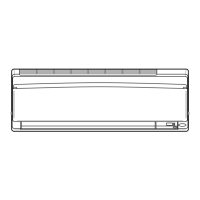Why is the cooling (heating) effect of my Daikin Air Conditioner poor?
- MMaria MosleyAug 4, 2025
If your Daikin Air Conditioner's cooling or heating effect is poor, check the following: * Ensure the air filters are clean. * Make sure nothing is blocking the air inlet or outlet of the indoor and outdoor units. * Verify the temperature setting is appropriate. * Ensure all windows and doors are closed. * Confirm the airflow rate and direction are set correctly.




